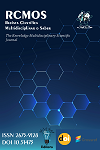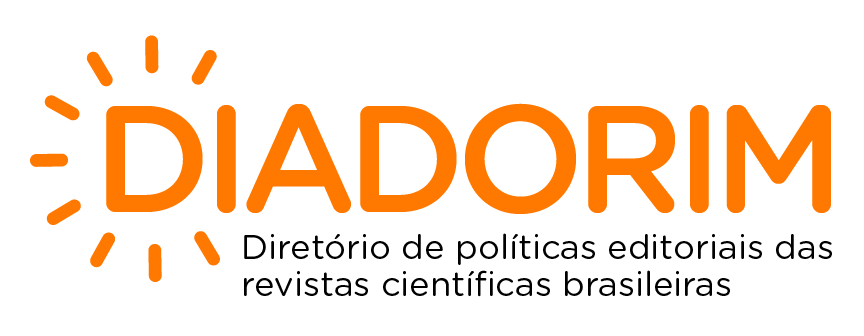The impact of digitalization on the marketing of the company Linhas Aéreas de Moçambique (LAM) based in the city of Maputo: A study of brand relevance
The impact of digitalization on the marketing of the company Linhas Aéreas de Moçambique (LAM) based in the city of Maputo: A study of brand relevance
DOI:
https://doi.org/10.51473/rcmos.v1i1.2025.900Keywords:
digitalization, marketing, brand relevance and aviationAbstract
This study investigates the impact of digitalization on the marketing strategies of Linhas Aéreas de Moçambique (LAM) and its relevance in the market, focusing on the city of Maputo from 2020 to 2023. The research analyzes how the digital transformation influenced consumer behavior and expectations, the digital strategies adopted by LAM, and brand perception in an increasingly competitive and globalized scenario.
Digitalization, accelerated by the COVID-19 pandemic, prompted LAM to rapidly adopt digital tools such as online reservations, social media marketing, and customer service via digital platforms. The study reveals social media as the primary source of information for customers, surpassing the official website in some aspects. However, the website remains a reliable source of information, and recommendations from friends and family continue to influence purchasing decisions.
The relevance of LAM's digital presence in the choice of airline for regional and international flights was unanimously recognized by respondents, highlighting the importance of maintaining a solid and active presence on digital platforms. The research also identifies areas for improvement, such as the need for more personalized and interactive digital marketing campaigns, website and app optimization, and more relevant and engaging content on social media.
In summary, digitalization has transformed LAM's marketing landscape, requiring the company to invest in innovative and personalized digital strategies to meet customer expectations and maintain market relevance. LAM must continue to monitor digital trends and adapt its strategies to stay ahead of the competition and provide the best possible experience for its customers.
Downloads
References
Aaker, D. A. (1996). Building strong brands. (1ª. ed.). New York: Free Press. Aaker, D. A. (1991). Managing brand equity: Capitalizing on the value of a brand name. (1ª. ed.). New York: Free Press. B2B Marketing & Deloitte. (2022). Transformação digital no marketing B2B. Relatório de estudo, edição especial.
Brown, T. (2009). Change by Design: How Design Thinking Creates New Alternatives for Business and Society. HarperBusiness. Chaffey, D. (2015). Digital marketing: Strategy, implementation and practice. (6ª. ed.). London: Pearson Education Limited. Chaudhuri, A. & Holbrook, M. B. (2001). The chain of effects from brand trust and brand affect
to brand performance: The role of brand loyalty. Journal of marketing, 65(2), 81-93. Davenport, T. H. & Harris, J. G. (2010). Analytics at work: Smarter decisions, better results. (1ª. ed.). Cambridge, MA: Harvard usiness Review Press. Gensler, S., Völckner, F., Liu-Thompkins, Y. & Wiertz, C. (2013). Managing mrands in the social media environment. Journal of brand management, 21(7), 1-16. Harrigan, P., Ramsey, E. & Ibbotson, P. (2017). The role of digital and social media in customer engagement: A strategic framework. Journal of business research, 88, 398-406. Iansiti, M. & Lakhani, K. R. (2014). Digital Distruption: Unleashing the next wave of innovation. (1ª. ed.). Boston,MA: Harvard Business Review Press. Kaplan, A. M. & Haenlein, M. (2010). Users of the world, unite! The challenges and opportunities of social media. Business Horizons, 53(1), 59-68. Keller, K. L. (2001). Building Customer-Based Brand Equity. Marketing Management, 10(2), 14-19 Keller, K. L., & Lehmann, D. R. (2006). Brands and Branding: Research Findings and Future Priorities. Marketing Science, 25(6), 740–759. Keller, K. L. (2013). Strategic brand management. (4ª. ed.). Boston, MA: Pearson. Kotler, P. (2003). Marketing management. (11ª. ed.). Upper Saddle River: Prentice Hall. Kumar, V., Sharma, A. & P. S. (2020). The role of digital and social media marketing in consumer behavior. International Journal of Consumer Studies, 44(6), 759-770. Kaplan, A. M. & Haenlein, M. (2010). Users of the world, unite! The challenges and opportunities of social media. Business Horizons, 53(1), 59-68. Kotler, P. (2010). Marketing Management. (14ª. ed.). Pearson Kotler, P. & Keller, K. L. (2016). Marketing management. (15ª. ed.). Boston, MA: Pearson Education. Laroche, M., Habibi, M. R. & Richard, M. O. (2012). To be or not to be in social media: How
brand loyalty is affected by social media?. International Journal of Information
Management, 33(1), 76-82. Mangold, W. G. & Faulds, D. J. (2009). Social media: The new hybrid element of the promotion mix. Business Horizons, 52(4), 357-365. O’Reilly, T. (2018). WTF? What’s the Future and Why It’s Up to Us. Harper Business Peppers, D. & Rogers, M. (2016). Managing customer experience and relationships: A strategic framework. (3ª. ed.). Hoboken, NJ: Wiley. DOI: https://doi.org/10.1016/j.bushor.2009.03.002
Pine, J. B., & Gilmore, J. H. (1998). Welcome to the Experience Economy. Harvard Business
Review, 76(4), 97-105. Pulizzi, J. (2014). Content marketing strategy: The heart of content marketing. (1ª. ed.). Dublin, OH: Content Marketing Institute. Ramaswamy, V. & Ozcan, K. (2018). What is co-creation?*. In the new science of customer experience: Creating value through engagement and co-creation Solomon, M. R. (2018). Consumer behavior: Buying, having, and being. (12ª. ed.). Boston, MA: Pearson. Verhoef, P. C., Kannan, P. K. & Inman, J. J. (2015). From multi-channel retailing to omnichannel retailing: Introduction to the special issue on omnichannel retailing. Journal of Retailing, 91(2), 174-181. Verhoef, P. C., Kannan, P. K. & Inman, J. J. (2021). From multi-channel retailing to omni-channel retailing: Introduction to the special issue on omni-channel retailing. Journal of Retailing, 97(2), 204-211. Young & Rubicam. (2001). Brand Asset Valuator: The Brand Equity Model.
Downloads
Additional Files
Published
Issue
Section
Categories
License
Copyright (c) 2025 Dércio António Machava (Autor)

This work is licensed under a Creative Commons Attribution 4.0 International License.












